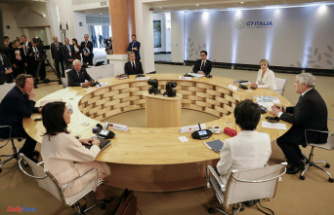"The footprint is the sign that leaves the foot of man or the animal on earth where it passes," according to the definition of the Royal Spanish Academy. And it is true, our passage through the planet does not go unnoticed or is free of charge. In recent years we are witnessing historical heat waves, intense storms that cause devastating floods and large forest fires increasingly frequent throughout the world. Global warming is constant and accelerated in this last decade. This is corroborated by a study by the World Meteorological Organization (WMO) that opens the door to the dangerous barrier of the temperature increase in 1.5 degrees. Stopping the warming around these grades would avoid, or at least it would reduce, some of the most catastrophic effects on the climate, and for some people it is a matter of life or death, according to the experts in many reports. The health of the planet is in danger and before the climate emergency, the global commitment to reduce CO2 emissions has been accelerated in the last two years.
The newly held United Nations Conference on Climate Change (COP26) brought together about 120 world leaders who sought to promote a global action capable of saving the planet from the climate emergency. The excess carbon dioxide in the atmosphere involves the great threat of climate change and all efforts should focus on making it emit more and even eliminating a part. The Summit left promises of change from the states to avoid a catastrophe.
But in addition to States, administrations and companies remain on the table proposals with which to reduce greenhouse gas emissions causing climate change. Corporate commitments with zero nets have accelerated in the last two years and this year, almost a third of the largest European companies announced that they will achieve zero emissions by 2050, according to a new Accenture study. Large companies, essential social agents to achieve a transformation towards a low carbon society, are adopting sustainability and compensation strategies of their environmental impact with diverse initiatives, including the recovery of natural spaces. In Spain, Siemens SA, with a social commitment to help meet the UN agenda 2030 and achieve neutrality by 2030 for a better planet, adds to the purpose of compensating for the CO2 footprint by collaborating with sustainable forests in an action of Reforestation of an area of the Sierra de Gredos that was devastated by a fire years ago. In November, more than 80 people from the company planted 480 trees. It was the beginning of a work that will continue in the coming months.
In addition to the massive plantation, another suggestion to stop more rapidly global warming is focused on high-tech air direct capture devices that aspire carbon dioxide.
Currently, according to the International Energy Agency there are 15 direct air capture plants in the world that capture more than 9,000 tons of annual CO2. The largest has been inaugurated this year in Iceland thanks to the Union of Start Up Switzerland ClimeWorks AG, specializing in taking gas directly from the air, and the Icelandic carbon storage firm Carbon Carbon. The plant sucks up to 4,000 annual tons of CO2 and deposits them under the ground, a figure that represents the equivalent of annual emissions of about 790 cars. It is a vital step to limit the global warming produced by the 6,400 million tons of global emissions issued this year, according to Global Carbon Project. Given these figures, scientists and the United Nations affirm that the world must cut its current emissions around half by 2030.
In the race to reduce the figures, large and small companies become negativizing carbon emissions, offset twice the emissions generated by their collection. And this is what Blue Banana has done this year. The firm, with a turnover of 4.1 million euros by 2020, has become the first Spanish fashion brand to achieve it thanks to its collaboration together with the START UP of Environmental Intelligence DCYCLE, which has allowed to analyze the impact of its Autumn-winter collection 2021 and convert it into negative by analyzing three variables: the impact of CO2 issued; Eutrophication, that is, contaminated fresh water; and the water footprint, or fresh water used in the process of manufacturing the garments. With the look on sustainability, the company has also initiated a process of resource efficiency to minimize the amount of water used in the manufacture of its garments.
And although the tour of the consolidation of the green business model in the world economy is still very long, all the steps, however small, add up for this purpose. Our future is in the hands and actions of all.
Date Of Update: 10 December 2021, 21:28











